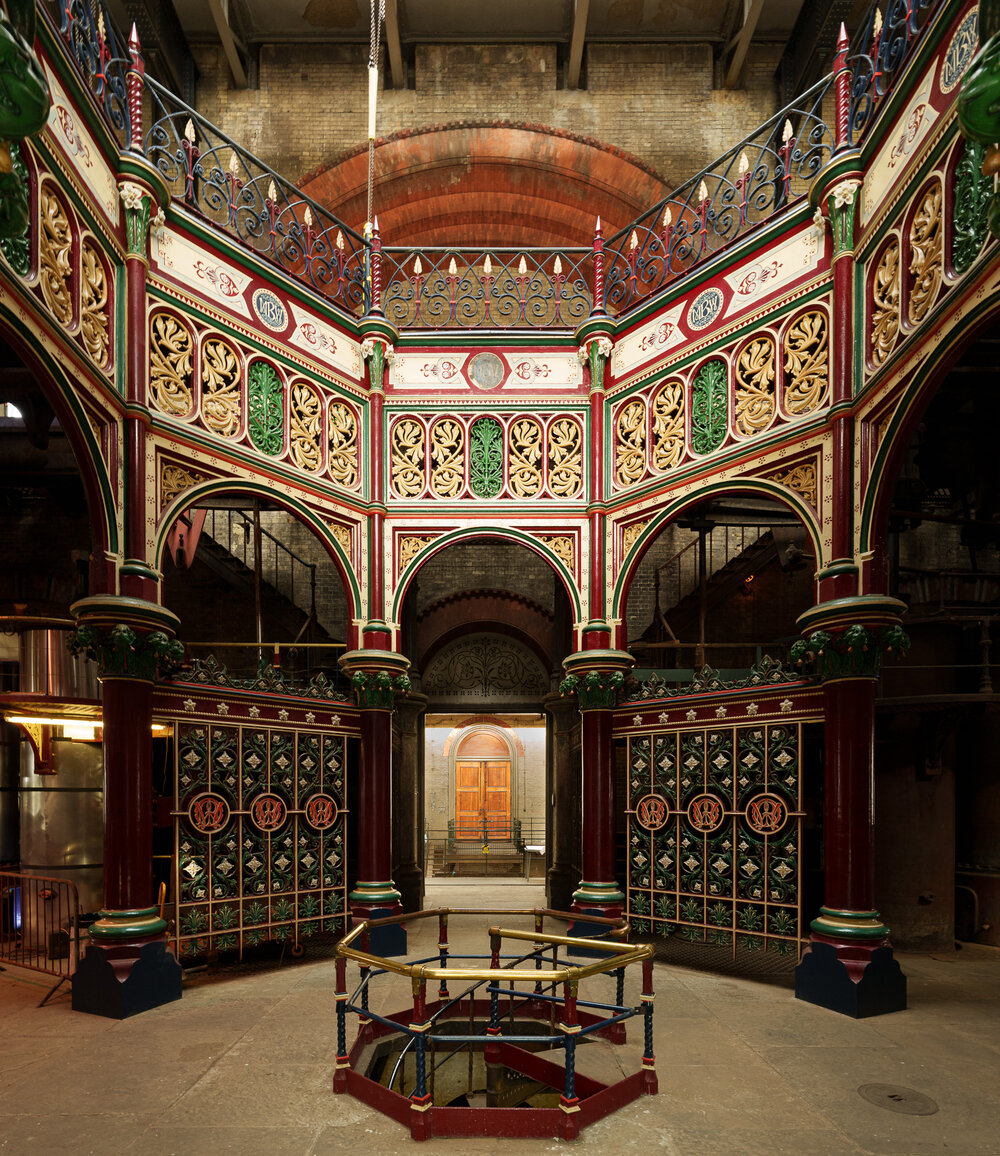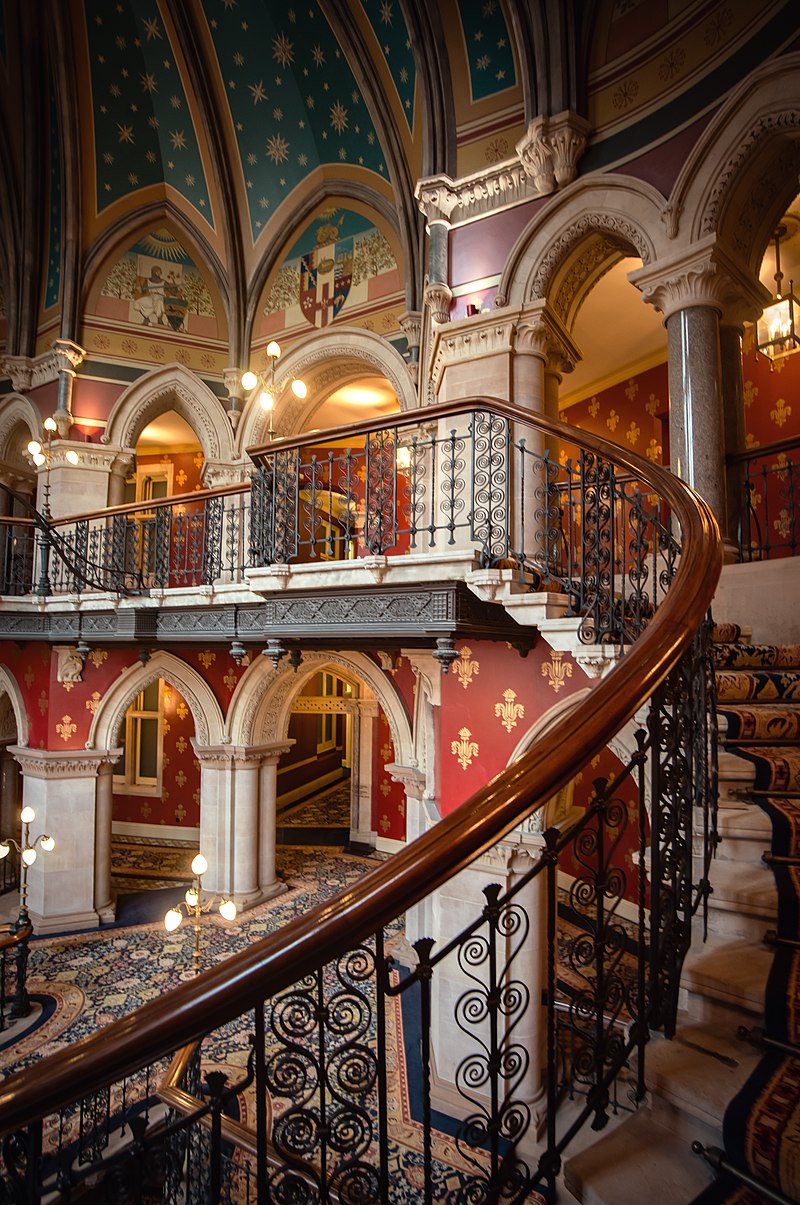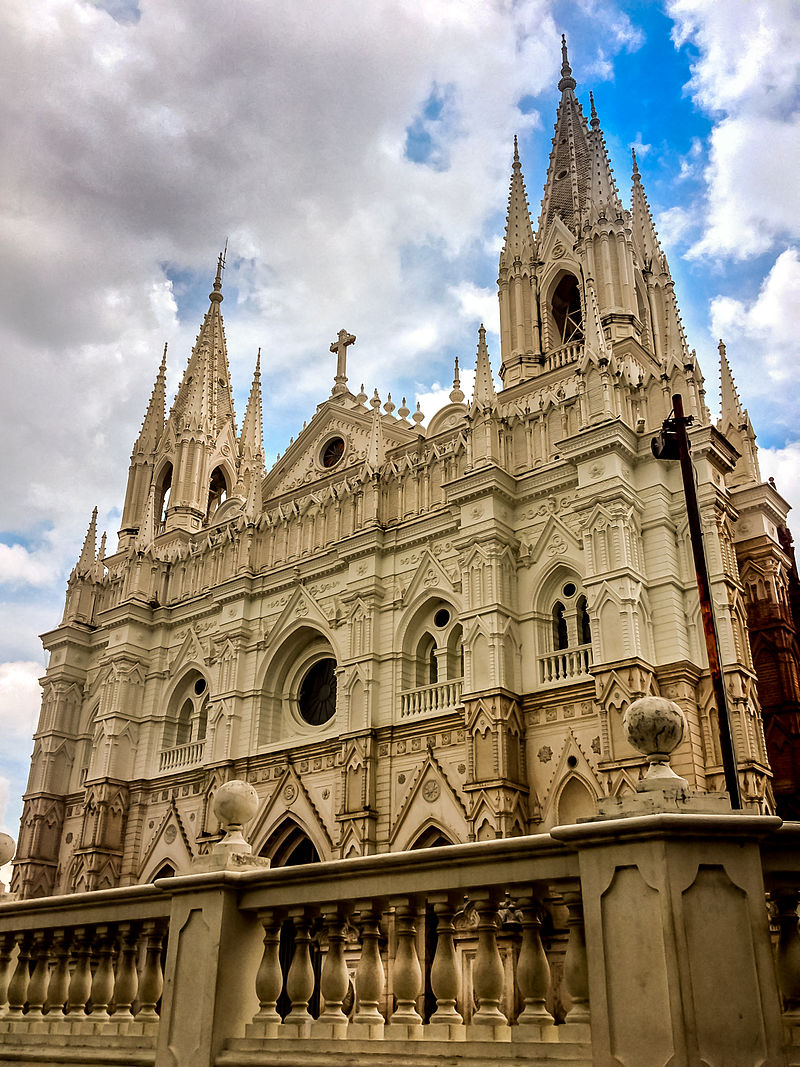This is a sewage pumping station from 1865.
Why did the Victorians build things like that? Were they just confused? Or did they have the right idea?

This is a sewage pumping station from 1865.
Why did the Victorians build things like that? Were they just confused? Or did they have the right idea?

The Victorians built everything: churches and train stations, theatres and public baths, banks and bridges, courts and town halls, museums and castles.
But there was no single Victorian style - they mixed together what had come before and transformed it into something new.
The best place to begin is with their most famous style: Victorian Neo-Gothic.
After centuries of slumber the architecture of the Middle Ages was revived by the Victorians, who filled their town halls with pointed arches, clustered columns, ribbed vaults, and stained glass.

There was no single style of Gothic architecture, of course, and the Victorians looked to all its incarnations for inspiration.
The French-style Royal Courts of Justice, more like a fantasy castle than anything else, has a flèche typical of Medieval French cathedrals.

The Palace of Westminster, designed by Augustus Pugin in 1840, is a prime example of Neo-Perpendicular.
Perpendicular Gothic originated in 14th century England as a more austere form of Gothic architecture, with an emphasis on vertical lines and reduced ornamentation.

Tower Bridge, finished in 1894, might just be the most emblematic work of Victorian architecture.
Its combination of Gothic design with modern materials and form creates something which, though Medieval in appearance, is unlike anything built in the Middle Ages.

And then there's something like the Templeton Carpet Factory in Glasgow, a remarkable reimagining of the Moorish and Byzantine influenced Gothic architecture unique to Venice in the Middle Ages.
Only here it is built from those famous red bricks rather than Istrian limestone.

The Victorians also created plenty of neoclassical architecture.
But rather than the purer form popular in the 18th century, which was more in line with actual Greek and Roman architecture, the Victorians revived the neoclassical style of the Renaissance.


Then there was the Romanesque Revival, which referenced the rounded arches, robustness, and relative simplicity of 11th century Norman architecture.
Originally used in churches, the Romanesque Revival soon spread to other public buildings like this, the Natural History Museum.

The Victorians also took inspiration from the Elizabethan and Jacobean architecture of the 16th and 17th centuries, especially the country houses of that time.


And, of course, Tudor architecture was also very popular, with its slender brick chimneys and infilled timber framing.
Except that here the timber framing was aesthetic rather than structural, as it once had been.

There was even an Egyptian Revival.
These offices at the Temple Works flax mill in Leeds were given all the trappings of Ancient Egyptian architecture, complete with an overhanging cornice, hieroglyphic inscriptions, and winged solar disk reliefs.

The Scots Baronial style, largely exclusive to Scotland, harked back to Medieval castles.
Balmoral is the most famous example, with its conical spires, barrel-shaped towers, jutting turrets, loopholes, and battlements.
Only, it's a house rather than a real castle.

The Victorians also pioneered new forms of building, especially in what might be called industrial architecture.
A good example is St. Pancras Train Station, where a vast train shed of girders and glass - once the biggest unsupported span in the world - was constructed in 1868.

Indeed, one of the defining features of Victorian architecture was its incorporation of modern materials and construction methods.
Whether in their historical revivalism or engineering marvels, the Victorians embraced structural metal frames, plate glass, and girders

The Victorians also filled their buildings with lavish decoration: explosions of colour and pattern, of wallpaper, ceramics, murals, and wrought iron.
There was no surface they left untouched by detail and ornamentation. And this, like so much else, divides opinion.


Most Victorian buildings do not neatly match the historical styles they draw on.
Rather, Victorian architecture mixed different styles from different eras, throwing together design elements never supposed to be united.
That is what makes it unique - and controversial.
Critics at the time (and ever since) have derided this Victorian eclecticism, whereby different architectural styles were thrown together with little regard for their true purpose and form.
For some, the result was messy and inauthentic, a mockery rather than a triumph.
Consider what had come before: the simpler and more harmonious forms of Georgian and Neo-Palladian architecture.
Compared with that, the chaotic extravagance of Victorian design, dripping with detail and ornamentation, can look like it was designed by AI.


But even if Victorian architecture ransacked the past for inspiration, it was also deeply modern.
Elsewhere in the world neo-Gothic architecture was generally more faithful to its Medieval models; Victorian buildings, meanwhile, were totally unique to the 19th century.



And the idea that different types of buildings should look different is thousands of years old - but, like so many other rules, the Victorians broke it.
Hence their banks like castles, town halls like cathedrals, factories like palaces, and sewage plants like temples.

It was in opposition to this mixing up of forms - whereby a building's purpose had little to do with its appearance - that some of the ideas of modern architecture first arose.
When Louis Sullivan said "form ever follows function", this is what he was referring to.
Victorian architecture is a total contradiction, looking both forwards and backwards, beholden to the past but unafraid to meddle with age-old forms, mixing historical styles at will and totally ready to embrace modern technology and methods.
The question is: does it work?
Today's edition of my free, weekly newsletter will include Shostakovich's jazz suites, the letters of Pliny the Younger, Rajput architecture, and more.
If you'd like to join 70k others in reading it, consider subscribing here: culturaltutor.com/areopagus